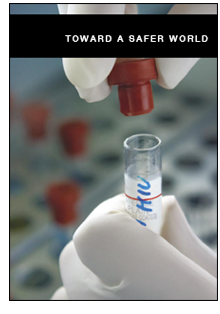
We’re in the late innings. An increasingly competitive economic and sponsored research climate finds successful, research-active faculty being courted by top universities with the same fervor professional teams bring to the recruitment of promising athletes to play on major-league baseball diamonds.
Anxiously checking the bases and finding them loaded, the world is turning to its academic bullpen, where institutions of higher learning are warming up to take on the challenges ahead.
But contracts have been renegotiated. It’s no longer possible to remain aloof — not in the skybox and not in the dugout. Where they did exist, ivory towers have long since gone the way of Ebbets Field. When it’s to the exclusion of other contributions, even coaching the bases from the sidelines borders on being called foul. Though the performance and preparedness of individuals are vital to the team’s success, much more than pedagogy is expected and required from players on the higher-education club.
So now, with the competition becoming ever more keen, veteran closers — institutions with long and storied histories of academic and research excellence — and energetic, nimble, rookie colleges and universities, eager to prove their worth, sense the importance and the enormity of what they are being asked to do.
Curves have been thrown, not to mention wild pitches. Crises seem to come out of left field, one after the other. But when facing heavy hitters, the bullpen needs to be focused and strong. And while today’s potential all-stars of academe are expected to continue to do what they do so well — educate and explore — they’re expected to step up to the plate in many other ways as well. They are being asked to captain the team.
They are being tapped to re-energize the game by generating ideas, technologies and products that advance local, national and global economies. They are being recruited to help even the score and level the playing field by solving pressing social and political problems around the globe. Ultimately, to help save the day, they are being signed by the global community — not just to teach others how to play or appreciate the nuances of the game, but to themselves suit up and play — skillfully. While raising its aspirations across the continuum of research, scholarship and creative activity, Binghamton University research is pumping up local and regional economies, advancing state and national interests and teaching students how they can do the same.
When the going gets tough, the tough get going. In the parlance of baseball, that often boils down to the club manager putting in a call to the bullpen for a relief pitcher capable of “bringing the heat.” An esoteric reference to a blindingly hot fastball, it didn’t take long for Wall Street advertisers, business executives and throngs of non-sports-minded people the world over to adopt the saying as shorthand for “raising your game.”
That, according to community partners and its own box scores, is
exactly what Binghamton University has been doing in recent years,
particularly as concerns its research initiatives. But raising its
own game isn’t the only effect of Binghamton bringing the
heat with ramped-up research, area business people said. Like the
burner on a hot air balloon, when the University brings the heat,
regional economies and quality of life are elevated as well.
Roberta Rivero, vice president for quality management at United
Health Services, where Binghamton University researchers are partnering
to improve hospital protocols and practices, credits Binghamton’s
burgeoning research programs with enhancing the regional economy,
fostering “brain draw” to the community, generating
local revenue and increasing cultural diversity.
Cynthia Giroux, technology director of thin films and surfaces research at Corning, and Sandeep Tonapi, project leader of micro- and nanostructure technologies at GE, agree. University research, both said, is key to spurring the economy and keeping bright young professionals in the area.
 “Under President DeFleur, the University has flourished,
garnered increased funding from state and federal sources and strengthened
ties to industry,” Giroux said. “With linkage to quality
companies through its centers and consortiums, this then allows
graduates to be linked to industries in the area.”
“Under President DeFleur, the University has flourished,
garnered increased funding from state and federal sources and strengthened
ties to industry,” Giroux said. “With linkage to quality
companies through its centers and consortiums, this then allows
graduates to be linked to industries in the area.”
“We feel that BU research in the areas of small-scale systems integration and packaging, flexible electronics, and electronics packaging is crucial to the region’s economic growth and vitality,” Tonapi agreed. “BU’s participation in these globally competitive areas with very high potential for economic growth complements the industry’s growth and provides the critically needed young workforce in science and engineering.” Since its inception in 1946 as Triple Cities College, the University has changed significantly. From its roots as a four-year liberal arts college with a reputation for superb undergraduate education, it has evolved into an excellent doctoral research university, with a broad range of liberal arts and professional programs, all carefully designed to preserve and build upon its traditional undergraduate excellence.
page 1 | page 2